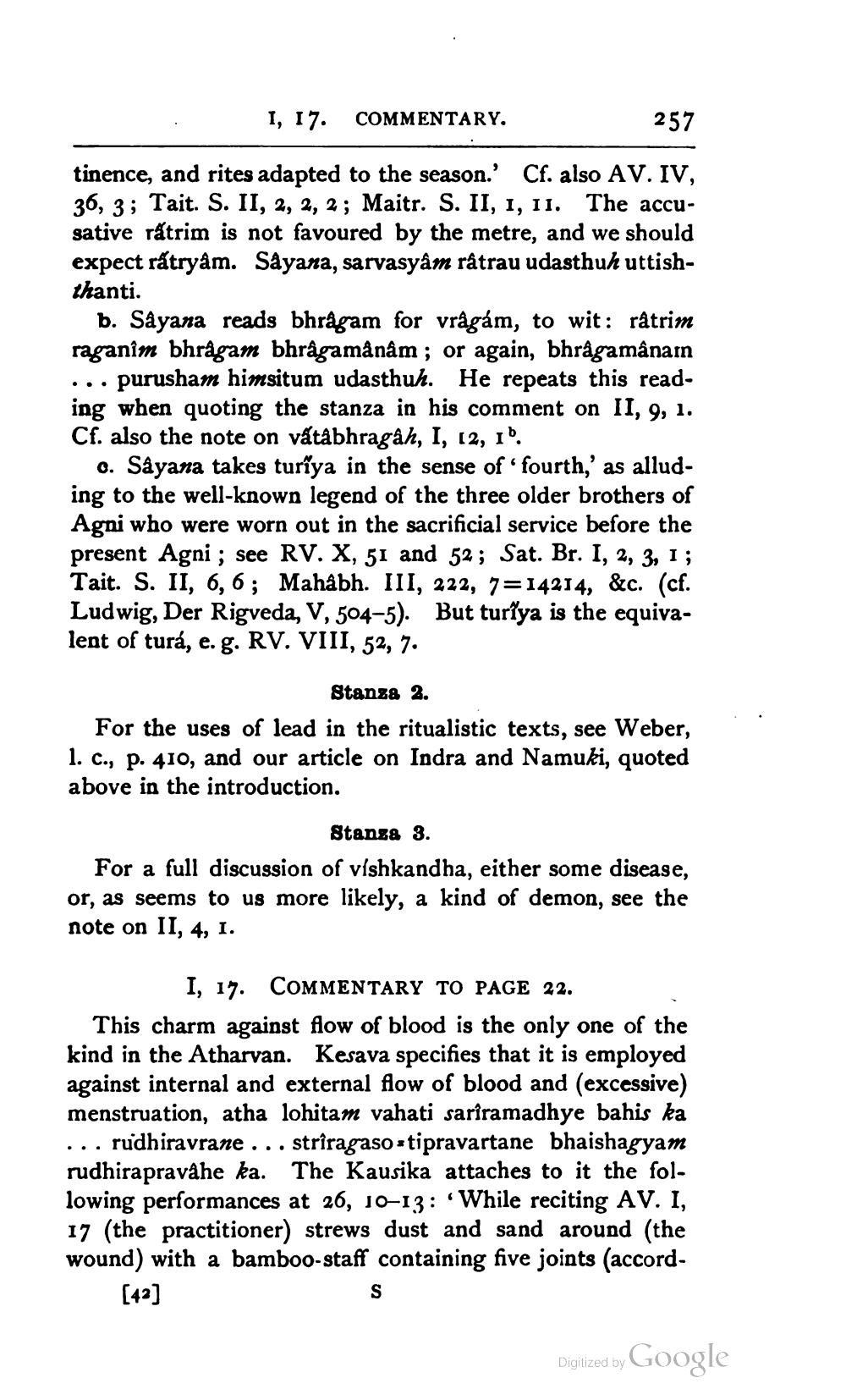________________
I, 17. COMMENTARY.
257
tinence, and rites adapted to the season.' Cf. also AV. IV, 36, 3; Tait. S. II, 2, 2, 2; Maitr. S. II, 1, 11. The accusative ratrim is not favoured by the metre, and we should expect rátryåm. Såyana, sarvasyam råtrau udasthuh uttishthanti.
b. Sayana reads bhragam for vrágám, to wit: râtrim raganim bhragam bhragamânâm; or again, bhragamânamn ... purusham himsitum udasthuh. He repeats this reading when quoting the stanza in his comment on II, 9, 1. Cf. also the note on vatabhragah, I, 12, 16.
0. Sayana takes turîya in the sense of fourth,' as alluding to the well-known legend of the three older brothers of Agni who were worn out in the sacrificial service before the present Agni ; see RV. X, 51 and 52; Sat. Br. 1, 2, 3, 1; Tait. S. II, 6, 6; Mahâbh. III, 222, 7=14214, &c. (cf. Ludwig, Der Rigveda, V, 504-5). But turiya is the equivalent of turá, e. g. RV. VIII, 52, 7.
Stanza 2. For the uses of lead in the ritualistic texts, see Weber, 1. c., p. 410, and our article on Indra and Namuki, quoted above in the introduction.
Stansa 3. For a full discussion of vishkandha, either some disease, or, as seems to us more likely, a kind of demon, see the note on II, 4, 1.
I, 17. COMMENTARY TO PAGE 22. This charm against flow of blood is the only one of the kind in the Atharvan. Kesava specifies that it is employed against internal and external flow of blood and (excessive) menstruation, atha lohitam vahati sariramadhye bahis ka ... rudhiravrane ... striragasostipravartane bhaishagyam rudhirapravahe ka. The Kausika attaches to it the following performances at 26, 10–13: While reciting AV. I, 17 (the practitioner) strews dust and sand around (the wound) with a bamboo-staff containing five joints (accord
[42]
Digitized by Google




